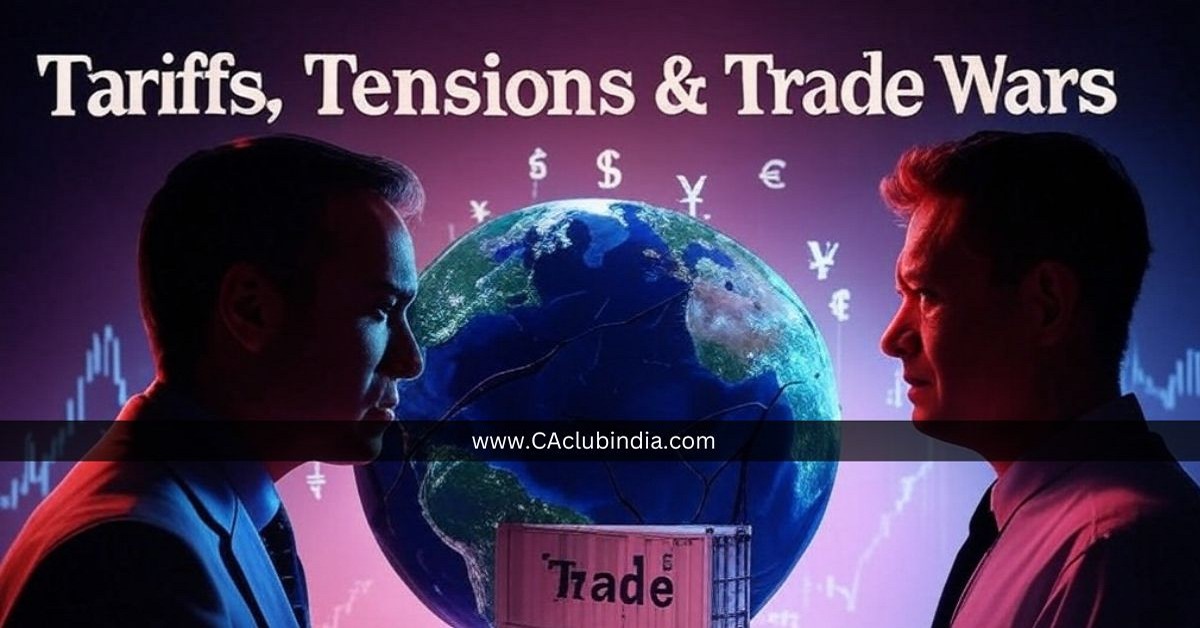The recent wave of U.S. tariffs imposed on China and a range of other countries has sent ripples through the fabric of global trade. These measures are not merely about numbers and economic metrics-they signify a deeper realignment in international relations, economic strategies, and global market dynamics. While intended to protect domestic industries and revive American manufacturing, the broader consequences of these tariffs are reverberating across Asia, the Middle East, and emerging economies, sparking economic uncertainty and a scramble for new trade alignments.

Trade between the U.S. and China has been fluctuating for years, often at the mercy of political tensions. In 2024, their bilateral trade volume reached approximately $582.4 billion, with American exports to China totaling $143.5 billion and imports hitting $438.9 billion. Despite the sheer scale of this relationship, newly imposed tariffs-raising Chinese imports by up to 54%-have created significant stress. In response, China has not only retaliated with counter-tariffs but is also reorienting its export strategy toward alternative markets. Meanwhile, sectors like semiconductors, rare earth minerals, and green technologies are becoming battlegrounds for economic supremacy between the two giants.
Saudi Arabia, a key player in the global oil market, finds itself at a critical juncture. With total trade volume with the U.S. standing at $25.9 billion in 2024-down significantly from previous years-the Kingdom faces the dual challenge of declining oil demand and economic diversification pressures. Although energy remains a global necessity, shifting consumer trends, alternative energy sources, and trade disruptions threaten Saudi Arabia's traditional economic foundation. The Kingdom's "Vision 2030" initiative to diversify its economy now holds even greater strategic importance.
South Asian countries- particularly Pakistan, India, Bangladesh, and Sri Lanka- are also feeling the pinch. Pakistan, with a trade volume of $7.3 billion with the U.S., relies heavily on textile exports. As tariffs raise the cost of these goods, Pakistan's competitiveness is at risk. Similarly, Bangladesh, with $10.6 billion in bilateral trade dominated by garments, faces growing uncertainty. India, despite a robust $129.2 billion trade relationship with the U.S., is not immune either. Tariffs on pharmaceuticals and IT products are putting pressure on its export sectors and raising concerns about long-term sustainability. For Sri Lanka, with a modest $3.4 billion trade portfolio, the challenges are even more acute.
For all these nations, the current scenario is nothing short of a complex economic test. On one hand, the U.S. remains a vital export destination due to its vast consumer base. On the other hand, the rising cost of entry into the American market due to tariffs is forcing these countries to rethink their trade strategies. The search for alternative markets, regional partnerships, and greater self-reliance is now more critical than ever.
This is not just a story about tariffs and trade volumes-it's a narrative of economic resilience, diplomatic recalibration, and strategic foresight. As global supply chains stretch and fracture under the weight of protectionist policies, the world finds itself entering a new era of economic realignment. Each nation must now play its cards with calculated precision, balancing between maintaining access to dominant markets and exploring new growth avenues.
In essence, this unfolding trade drama is not merely a fluctuation in import duties-it represents a tectonic shift in global commerce. Tariffs have become tools of economic influence, reshaping alliances and redrawing the map of international trade. In a world this interconnected, no ripple goes unnoticed, and every decision reverberates far beyond its origin. As countries brace for the long-term impact, one thing is clear: the rules of global trade are being rewritten-and the players must adapt, or risk being left behind.






 CAclubindia
CAclubindia

